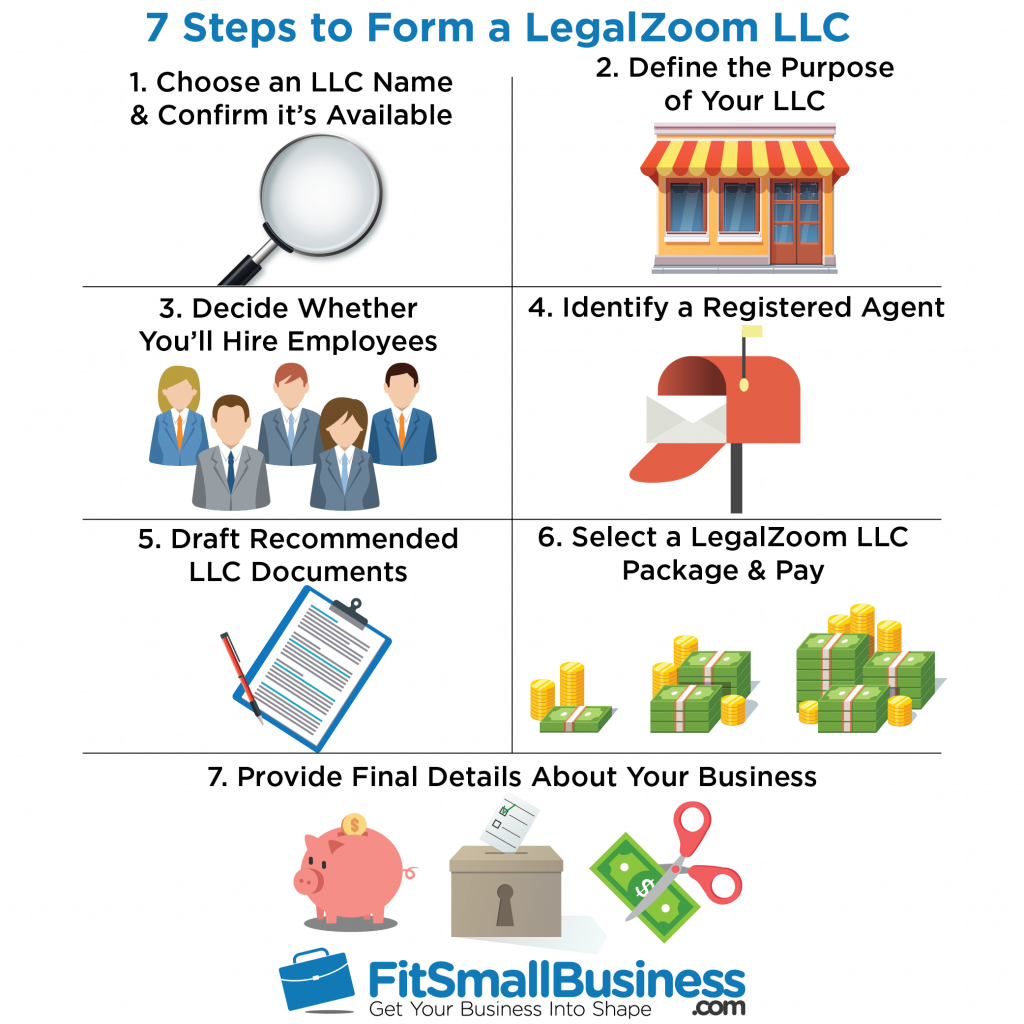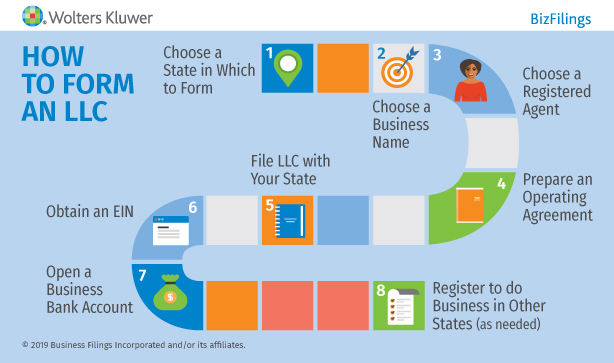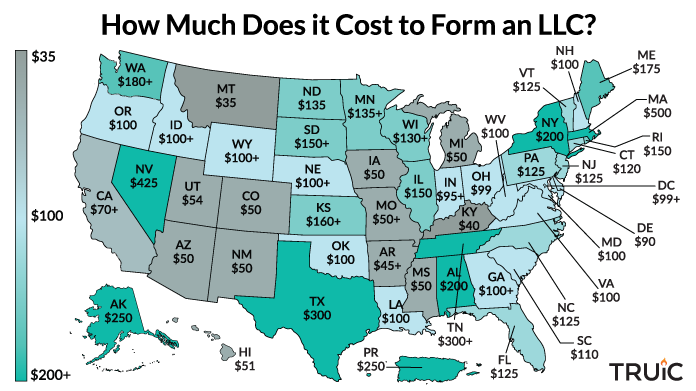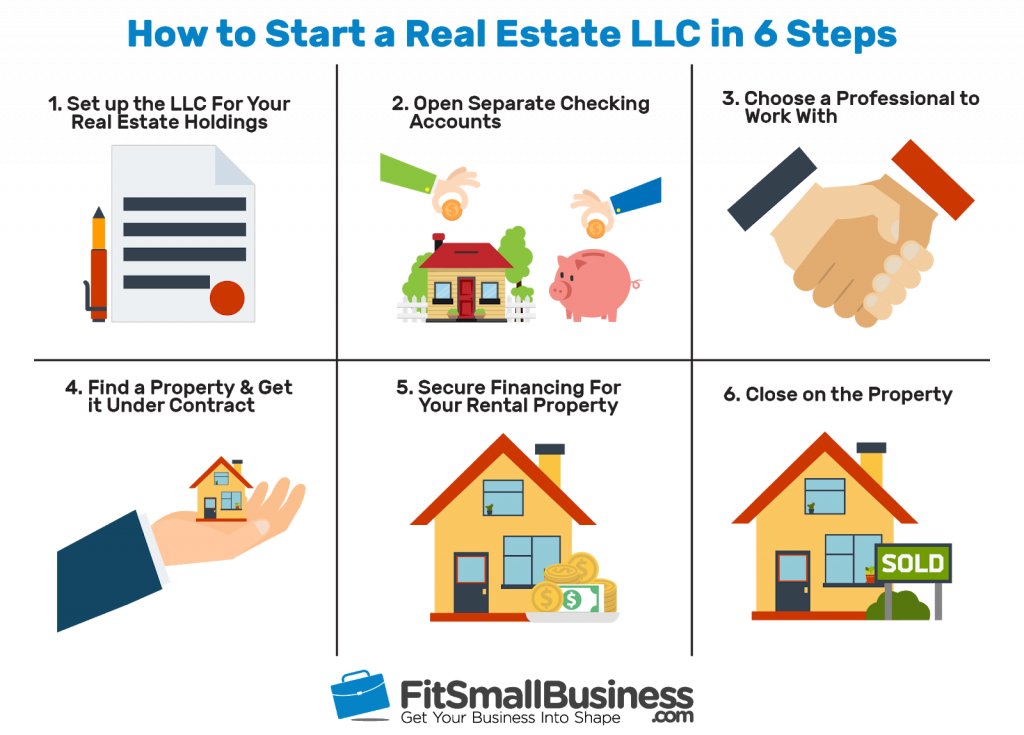How to Start an LLC: A Step-by-Step Guide
One of the most important steps in starting a small business is deciding on a business structure. There are many to choose from, each with its own advantages and features. For most small business owners, an LLC is a great choice because of its simplicity, flexibility and ability to protect personal assets. This article will explain what an LLC is, its advantages, and the seven steps you need to take to set one up yourself.

What is an LLC?
An LLC, or limited liability company, is a business structure that shields business owners from being personally liable for the company's debts or other liabilities. It is a hybrid entity that combines the benefits of partnership and sole proprietorship structures. LLCs can be owned by one person or by multiple people, known as LLC "members."
An LLC provides protection from personal liability in most cases by keeping your personal assets – such as your vehicle, house and savings accounts – safe if your LLC declares bankruptcy or is sued.
Single-member LLCs are pass-through entities, so the profits and losses from the LLC are "passed through" to you and taxed as personal income. The benefit of this is that you don't have to pay both corporate and personal taxes on your earnings. Similarly, multi-member LLCs are taxed as partnerships – which are also pass-through entities – with each owner paying personal income taxes on their portion of the profits.
Alternatively, you can choose to be taxed as a C corporation or an S corporation.
Key takeaway: An LLC is a flexible business structure that protects the owners' personal assets.
Benefits of an LLCAn LLC structure provides many benefits for your business besides the liability protection. These are the main advantages:
Key takeaway: An LLC is easy to form and has few maintenance requirements. One of the main benefits of this structure is that your business is taxed as a pass-through entity.
How to start an LLCOnce you've decided to proceed with forming your business as an LLC, there are a few steps you have to take to get you to your goal.

1. Select your state.
The first thing you have to do as an LLC owner is select the state in which you will operate your LLC. For most new business owners, the most logical option is to form the LLC in the state where you live. If your business will have a physical presence (i.e., a storefront or office) in other states, you will need to register a foreign LLC in each state where you plan on doing business.
There are some situations in which you might choose to form your LLC in a different state from where you live. A few states, like Delaware and Nevada, have business-friendly laws that may attract potential LLCs. However, registering your LLC in another state (or multiple states) can incur costly fees and extra paperwork. [Read related article: How to Expand Your Business to Another State]

2. Name your LLC.
After you've decided where to set up your business, it's time to choose a business name. Each state has different rules for business names, but in general, you can expect to follow these guidelines:

3. Choose a registered agent.
A registered agent is a person or other business that sends and receives legal documents on your behalf. These documents can include legal summons or document filings that your registered agent will receive and forward to you. Most states require LLCs to use a registered agent, and the agent must be a resident of the state in which you are doing business.

4. File for state.
Your next step will be to register your LLC with the state. In most regions, a construction document is called an "organizational document," but it can also be called a "organizational certificate" or a "organizational certificate." This document, together with your state-of-the-art investment fee, is what officially creates your LLC. You can send your documents by post or online.

5. Find your management structure.
As an LLC, you have the power to choose how your business management will be structured. You can have your own member-owned company, which means that there are a small number of LLC members all involved in the day-to-day running of the company, or managing managers, where members do not wish to be involved in managing matters and putting that power in the hands of management (or higher) managers.

6. Create an LLC performance agreement.
The LLC's performance agreement is a legal document that sets out the patent structure and roles of members in your LLC. Many countries do not legally require a working agreement, but it can still be helpful to get everything down on paper. These are some of the clauses in the performance agreement:
Organization: This section describes when and where the company was created, who the members are, and the patent structure.
Management and voting: This section looks at how the company is managed and how decisions are made.
Financial contributions: This is where you will decide which members will fund the LLC and build a structure for future fundraising.
Distribution: This shows how the company's profits and losses are shared among members.
Dissolution: This section describes the circumstances in which an LLC may be dissolved under.
[Read related article: A guide for your small business in LLC operating agreements]

7. Get an EIN.
The EIN, or Employer Identity Number, serves as a Social Security number for your LLC. You will need an EIN to hire staff and open business bank accounts. You can get the EIN for free on the IRS website, either by fax or email.
Taking the keys: There are seven basic steps in building your LLC. Start by choosing a business name and the environment in which you will run your business.
What to do after starting an LLC
Once you have started, named and installed your LLC, you still need to take care of a few things to get your LLC fully operational and functional. First and foremost, make sure you register your LLC with state tax. If you are selling a real product, you will need to register for sale and use taxes, and if you have employees, you will need to register with the state to get unemployment and tax insurance.
Next, show how to do your accounting. You may choose to do it yourself, where you should research the best accounting software to help you track everything. You may also choose to hire a certified public accountant to help you set up or do your own accounting.
If your business needs permission for any reason, now is the time to sign up for them. Some business activities require state-class permits, such as liquor sales, mining and driving, transportation and air transport. State and local laws surrounding permits vary.
You should also seriously consider getting business insurance. Many countries require some form of insurance, usually compensation for workers at least. General credit insurance is highly recommended, as it protects your business property from legal liability by incurring damages, property damage, personal liabilities, advertising debt and legal protection.
Lastly, make sure you follow the hiring rules at both state and federal levels. These are the main hiring requirements:
Workers must be eligible to work in the U.S.
You must report any new appointments to the state.
You must provide employee insurance to employees.
You must withhold employee tax.
You must print the posters to accompany the placement a


Post a Comment
If you have any doubts, please let me know